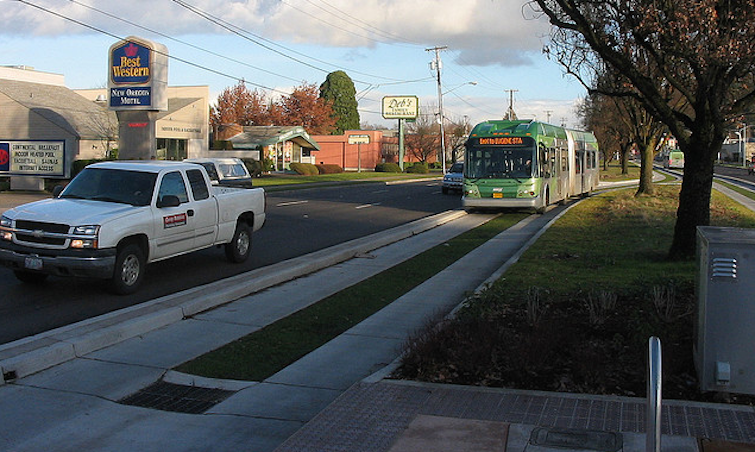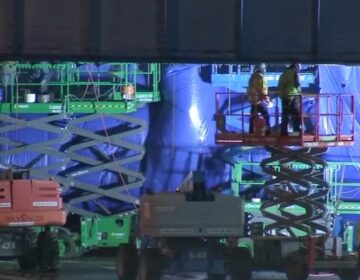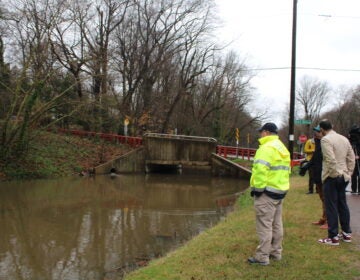DVRPC Loosies: Roosevelt Blvd. transit analysis, solar regulatory reform, regional LED streetlight procurement

Returning briefly to our regularly scheduled non-Papal programming, there were a few updates worth noting quickly from the Delaware Valley Regional Planning Commission meeting last Thursday that were overshadowed by ex-World Meeting of Families event consultant Michael Pitts’s pronouncements on the security plans. Here’s what you missed:
Roosevelt Blvd long-range planning
The DVRPC board unanimously approved an amendment to the FY 2016 work program to include a Roosevelt Boulevard Alternatives Modeling and Forecasting Study. DVRPC’s BRT-lite study for the Boulevard is wrapping up, and they’re going to start in on a deeper technical analysis of long term options, funded by the TIGER grant the city received in 2014.
That study will include both a highway and transit analysis, and Chris Puchalsky, the Deputy Director for Transportation Planning at DVRPC, emphasized that it’s a major undertaking. The study is projected to cost $263,500 over 1-2 years, with possible add-on variable cost elements.
New Economic benefits modeling tools
The board also unanimously voted to amend the FY 2016 work program to provide for the use of some new SHRP2 Economic Analysis Tools to estimate the wider economic benefits of three transportation projects, including hard shoulder running along the Blue Route, the Montgomery County turnpike project, and the economic benefits of PATCO.
“If it works well we’re going to share our findings with a national audience,” he said, “and if it doesn’t work well we’re going to say to other MPOs who might interested in these tools what some of the hiccups are.”
The Strategic Highway Research Program II (SHRP2) is a partnership of FHWA, AASHTO, and the Transportation Research Board focused on “innovative and practical solutions to complex challenges.” It’s not just research though. Puchalsky noted that SHRP2 is unique in that it also provides assistance with implementation.
Solar regulatory reform and bulk purchasing
Elizabeth Compitello, a research analyst with DVRPC’s Energy and Climate Change Initiatives, also presented on a $15,000 grant DVRPC was awarded from the Department of Energy to provide technical assistance and training to municipalities seeking to streamline their solar regulatory practices.
DVRPC will be able to work with an additional five municipalities with the new funds. It will also fund new efforts, including “Solarize” program outreach for bulk purchasing and installation of solar panels at the community level, and a solar-friendly new construction checklist.
Compitello started the initial outreach and training a year ago to municipalities around the region, sharing knowledge on permitting, zoning, and best practices for solar, and 10 municipalities have since requested additional technical assistance. Program staff have also been working with citizen groups interested in solar, helping them engage municipal staff to get the process started.
LED Streetlights
Compitello has also been working on bringing LED streetlight replacement to scale outside Philadelphia with the Regional Streetlight Procurement Program. There are an estimated 38,000 streetlights in the region that are candidates to be retrofitted with LEDs.
She explained that there is a perfect storm for LED replacement in PA right now, thanks to a trifecta of policies. First, municipal ownership of street lights is atypically common in Pennsylvania. More than 95% of municipalities own their streetlights. Second, PECO will adjust power bills downward due to savings from LEDs. They use an algorithm for billing, and plugging in LED deployment into the equation lowers bills.
Third is access to capital. The financial costs of LEDs are dropping, warranties are longer, and payback time is now down to 4-8 years. Just five years ago, when DVRPC first started looking at this, the typical investment took 10-15 years to pay off. Four to eight years is still a long time though, so it helps a great deal that municipalities can now seek financing for this from the state, via the Pennsylvnia Sustainabie Energy Finance program created by the state Treasurer’s office.
We’re planning to follow up with Compitello later this summer to check in on the status of LED street lighting in Philadelphia proper, at which point we’ll take a deeper look at how PennSEF works.
Updating Employment Forecasts for the Navy Yard
DVRPC updates its employment forecasts in five-year intervals, and the last one was completed in 2012. The employment numbers for the Navy Yard have been coming in ahead of forecast though, and the city requested that DVRPC amend their 2040 forecasts for the Lower South planning district early, as the higher numbers will add some more gravitas to their case for federal funding for a Broad Street Line extension.
The city thinks 15,319 employees by 2040 is a more accurate projection.
Camden updates
Camden Mayor Dana Redd, presiding over her first meeting as DVRPC’s new Board Chair, gave a presentation highlighting the ways that DVRPC has helped Camden plan its economic turnaround, and showcasing some of the ways that’s starting to pay off.
Mayor Redd cited the Haddon Avenue Transit Village gateway enhancements, the Baldwin’s Run tributary trail project, and the Morgan Village safe corridors project, which NJ DOT played a part in funding. She mentioned DVRPC’s Downtown Traffic Feasibility Study and the 2011 parking needs assessment for Camden as being especially helpful for planning.
She also singled out New Jersey’s Economic Opportunity Act of 2013 as an important step forward for actualizing Camden’s redevelopment strategy, revolving around a regional waterfront destination, multi-modal transportation options, and education and medical hub, business anchors like the Subaru headquarters and the new PriceRite supermarket, and an overhaul of the city’s approach to community policing, which was recently highlighted by President Obama.
WHYY is your source for fact-based, in-depth journalism and information. As a nonprofit organization, we rely on financial support from readers like you. Please give today.






